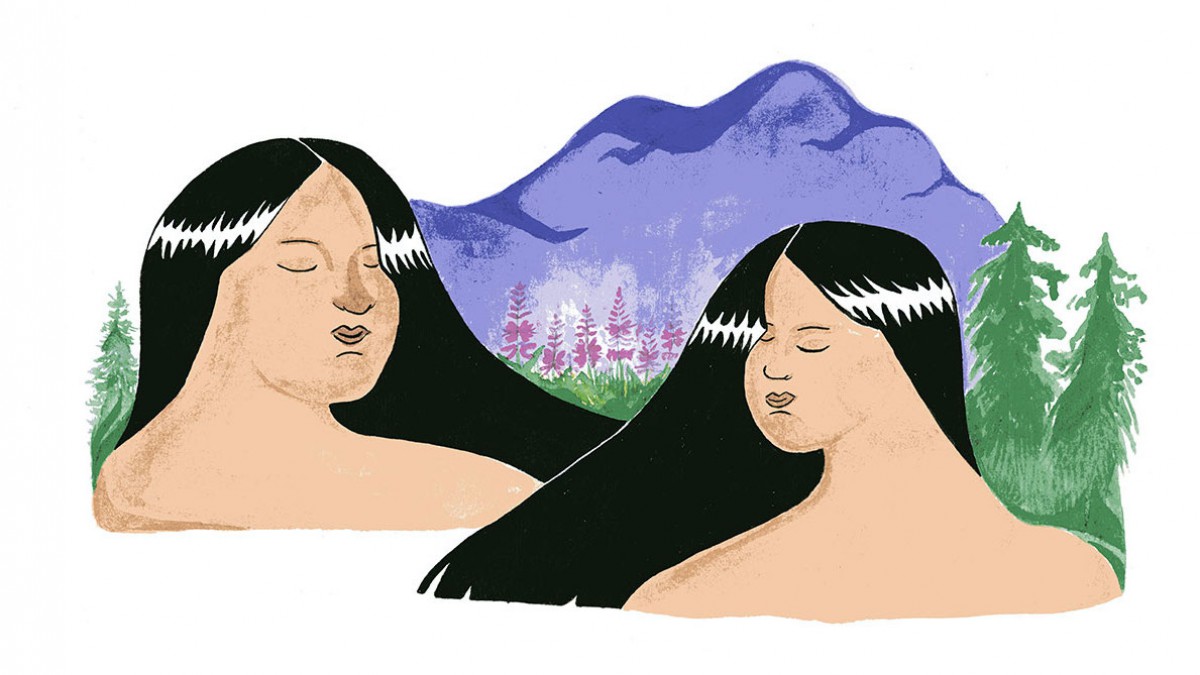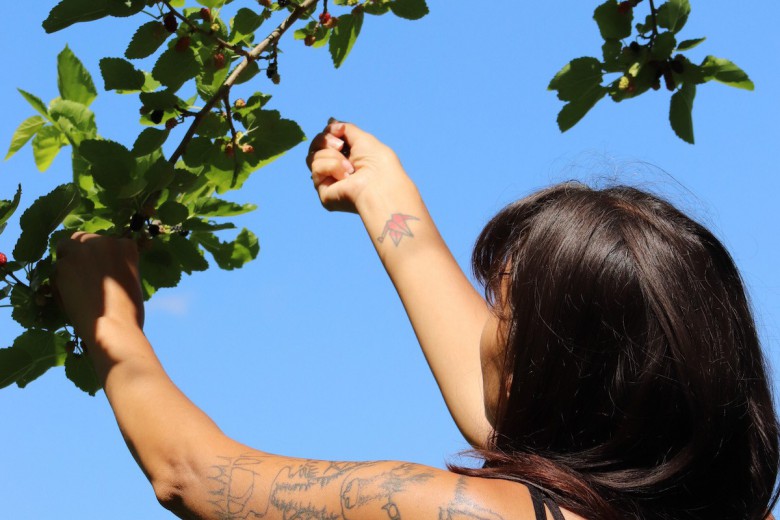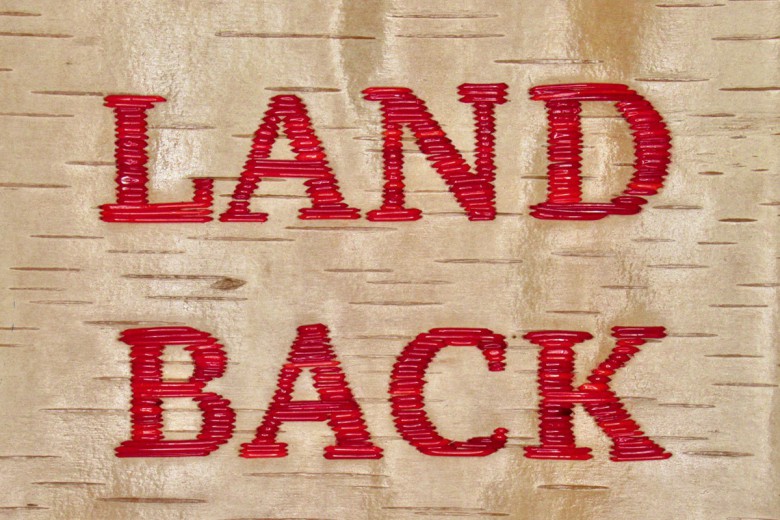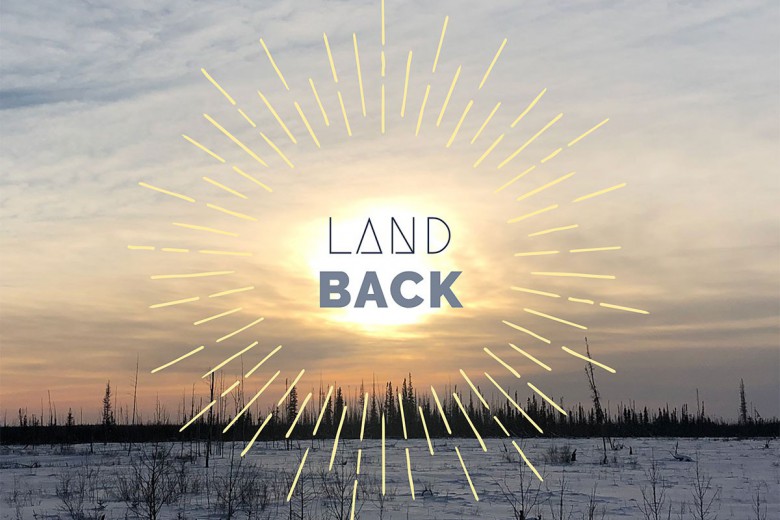Like any prairie NDN, if I fulsomely examine my family tree, it becomes quite obvious that kinship systems are expansive and borderless on the plains. Though I am nehiyaw, the roots of this tree include Métis, Anishinaabe, Dene, and Haudenosaunee Peoples as well. This tree contains people on treaty lists and people who took Métis (or “halfbreed”) scrip. Sometimes it was merely colonial processes that turned an Indian into a half-breed or vice versa. Many people left treaty to take scrip because they were in a dire situation and knew they would get more money up front.
Though from the perspective of the Crown, both treaty and scrip extinguish Aboriginal Title, the benefits of treaty for First Nations people exist as long as there are babies born – many of us continue to receive annuity payments, have hunting and fishing rights on our Treaty Lands, and more. In contrast, while scrip was a larger payout of $160 (later increased to $240), it was a one-time occurrence that does not continue to benefit descendants like treaty does. From the perspective of the Canadian government, even though they agreed to honour treaty “as long as the sun shines, the grass grows and the river flows,” eventually they expected that Indians would die out and they would no longer be required to provide us with treaty benefits.
These categories and lands were never easily divided. This is something we contend with to this day and it is important to consider when we discuss what it would mean to get our land back.
In the end, after all this turmoil, I was born a Status Indian registered to the Alexander First Nation with a nehiyaw mom and a white dad. Due to the constraints of the Indian Act and my Métis ancestry, if I reproduce with someone who does not have Indian status, my children will be eligible to become members of the Métis Nation of Alberta (MNA) but ineligible to be members of my First Nation or access Treaty 6 Rights, despite having a mother who does not identify as Métis. This is not unusual. Many Métis identify as treaty descendants on the Prairies. These categories and lands were never easily divided. This is something we contend with to this day and it is important to consider when we discuss what it would mean to get our land back.
If you are not confused by this point, you should know that discussion of kinship and shared territories has existed on the Prairies since time immemorial, but it has recently been made much more complex by settler-colonial occupation of our lands, genocidal laws and policies, and development and extraction of resources in what are now the Prairie provinces. I start with this personal reflection on Prairie kinship because I believe it demonstrates this very complexity and plurality. Many other Prairie NDN writers and academics have written about this, including Lindsay Nixon, who writes in nîtisânak about “the parts of my family’s identity that cannot be restrained by colonial law and categorizations of our communities.”
Over time, the kinship between Métis and First Nations people has been eroded.
My family tree is partially the legacy of the nehiyaw-pwat or Iron Confederacy, which was a political and military alliance of Prairie Indigenous Nations – including the Métis – which was solidified during the fur trade. It was the decline of this fur trade and the purposeful obliteration of the buffalo that weakened our political alliance. After the 1885 Resistance, our collective governance fractured. As the settler-colonial project was furthered on the Prairies, the divide between Métis and First Nations has widened.
Unfortunately, the Iron Confederacy has seemingly been revived as the Iron Coalition, a group whose sole purpose is achieving Indigenous ownership in the Trans Mountain pipeline. The leadership of this coalition includes men from the Fort McKay Métis, the Papaschase First Nation (which is not recognized as a First Nation by the federal government), and the Alexis Nakota Sioux Nation.
Over time, the kinship between Métis and First Nations people has been eroded. Both “Métis” and “Indian” (i.e., First Nations) are categories enshrined in Canada’s Constitution. Under the umbrella of First Nations, there are many nations. In many cases, Métis communities share more cultural commonalities with First Nations relatives near them than the Métis far away in other provinces. Prairie NDN writers and academics such as Jessie Loyer, Rob Innes, Daniel Voth, Matt Wildcat, Molly Swain, and others have demonstrated that Prairie NDN governance has more fluidity than current colonial structures allow us to enact. We are all connected and in kinship with each other, even if we do not always acknowledge this and even if our “official” leaders do not recognize or act on it.
In the end, if we are to rebuild our complex kinship systems and reclaim jurisdiction over our territories, we must do so with one another.
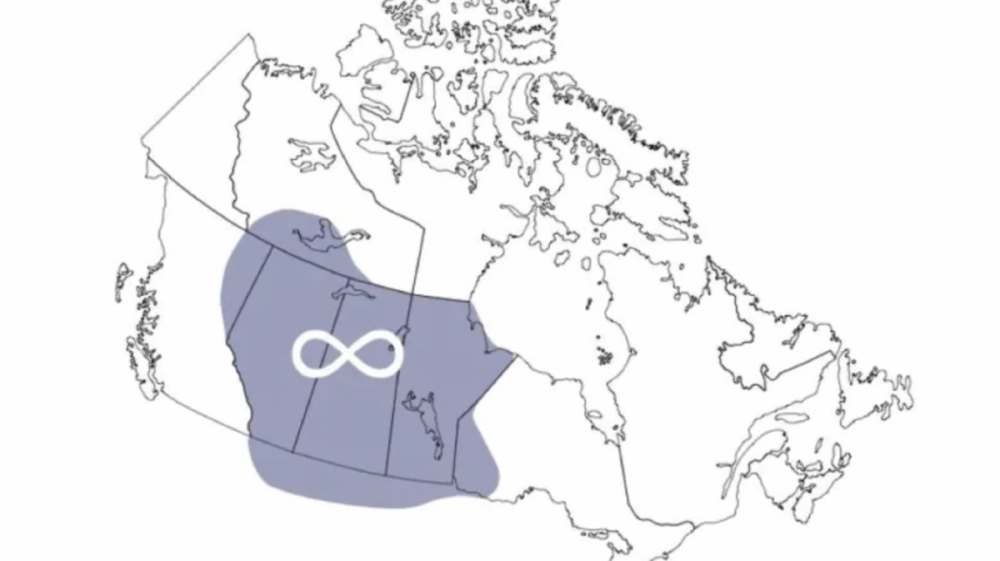
In 2018, the Métis National Council passed a resolution and released a map detailing the Métis homeland, which included the entirety of the three Prairie provinces and parts of British Columbia, Ontario, the Northwest Territories, and the United States. This map sparked much controversy on social media with First Nations people in the Prairie provinces, many of whom denied Métis claims to this land altogether, particularly in Blackfoot territory. In the end, if we are to rebuild our complex kinship systems and reclaim jurisdiction over our territories, we must do so with one another. We have prioritized appealing to the federal and provincial governments, who – while they may hold the practical, everyday jurisdiction over our lands – have no way to prove that they have title to them.
In British Columbia, one of the biggest concerns with the ongoing effort to negotiate treaties is the issue of overlapping territories. Though the process was started in 1992, only three treaties have been concluded through the treaty negotiations process. Union of B.C. Indian Chiefs Grand Chief Stewart Phillip told CBC he opposes the process, since he’s worried that the rights and Indigenous Title of those who aren’t participating in the treaty process could be infringed upon by other First Nations that are actively negotiating for these lands.
As I mentioned, from the perspective of the Crown, Prairie Indigenous Peoples ceded our lands by signing treaties, so we do not commonly have comprehensive land claims agreements like those in B.C., where treaties were never signed. However, various Métis governments in Canada are moving forward with land claims, including the Manitoba Métis Federation, which, in 2013, was recognized by the Supreme Court of Canada as the body that represents Manitoba Métis for the purpose of a claim against the Crown.
Many historic Métis communities on the Prairies that Métis people may want to reclaim are significant areas for First Nations as well.
We are now living with the imposition of settler law, and it is difficult to think about how we might share territory once large parts of the Prairies are repatriated. If individual settlers wish to give their privately owned land back, they must choose an individual, a First Nation, or a Métis government as the recipient of the land. Recently, the federal government simplified the Addition to Reserve process, allowing First Nations to more easily convert land in fee simple to reserve lands, but converting privately owned land to reserve land can still take years. Though reserve lands can be shared by multiple First Nations (for example, Pigeon Lake 138A is shared by the four bands of Maskwacis), there is currently no way to recognize shared Métis and First Nations jurisdiction under Canadian law. There is also no established legal process for Métis to add land to the eight Alberta Métis Settlements. Many historic Métis communities on the Prairies that Métis people may want to reclaim are significant areas for First Nations as well.
There are many examples of this on the Prairies, though the one I think about the most is a lake in my territory – it’s known as manitou sakahikan (spirit lake) to the nehiyaw, wakamne (god’s lake) to the Nakota, and Lac Ste. Anne in French. It was considered a sacred space and a neutral zone, meaning that it was shared by many different nations and that war was not allowed in the area. The village built on the shore was one of the first Métis communities in Alberta to include permanent structures, and the first Catholic mission. The lake is now the site of the Lac Ste. Anne Pilgrimage, which is attended by many different Indigenous Peoples from the Prairies and beyond. On the shores of this lake now lies the Alexis Nakota Sioux Nation, and many Métis people still live in proximity to Lac Ste. Anne. Land Back requires we consider how we may deal with areas of shared jurisdiction and areas of spiritual significance.
The Prairie provinces have provided prosperity to millions of people, and yet most Prairie NDNs do not live wealthy lives, through either settler or Indigenous understandings of wealth.
I often think of what could have been had the Treaty 6 commissioners agreed to Chief Poundmaker and Chief Big Bear’s request for a large reserve in the Cypress Hills to house all Indians and half-breeds within their kinship systems. Of course, this request was denied and later in 1878 the Métis of the Cypress Hills hunting brigade petitioned for a reserve again. The Métis have long been petitioning for land bases and it would not be until the Ewing Commission in the 1930s that the Métis had an official land base, with the creation of 12 Métis settlements in Alberta. Still, just as reserve lands are not spacious enough to house all First Nations people, a small fraction of Métis in Alberta live in the remaining eight settlements. On the Prairies, it is largely assumed that Aboriginal Title has been extinguished through the Numbered Treaties and scrip, though we know the consensus among First Nations and Métis is that our lands remain unceded. The Prairie provinces have provided prosperity to millions of people, and yet most Prairie NDNs do not live wealthy lives, through either settler or Indigenous understandings of wealth.
Though we often think of Métis and First Nations governance being siloed from the treaty era onwards, since we have been divided through settler legal systems, there are many examples of continued kinship and co-operation. Malcolm Norris, who helped establish the Métis Association of Alberta and the Métis Association of Saskatchewan, and Johnny Callihoo, who helped establish the League of Indians of Alberta, were close political confidantes and collaborators. Joseph Dion, one of the founding members of the Métis Association of Alberta, was an enfranchised Indian from the Kehewin Cree Nation. He was the nephew of Chief Big Bear and continued the tradition of advocating for Métis relatives.
Earlier I mentioned that the Prairies are borderless. By this I do not mean that Indigenous Nations do not assert jurisdiction over particular territories, nor am I denying the violent existence of the United States/Canada border that runs through the territories of many prairie Indigenous Nations. European political traditions would have us believe that being sovereign means asserting exclusive control over a territory, whereas Prairie NDN political traditions teach us that it is through our relationship with others that we are sovereign, that sharing is not a sign of weakness but of ultimate strength and diplomacy. nehiyawak know that vulnerability is strength and choosing to share land with other people is an example of this.


